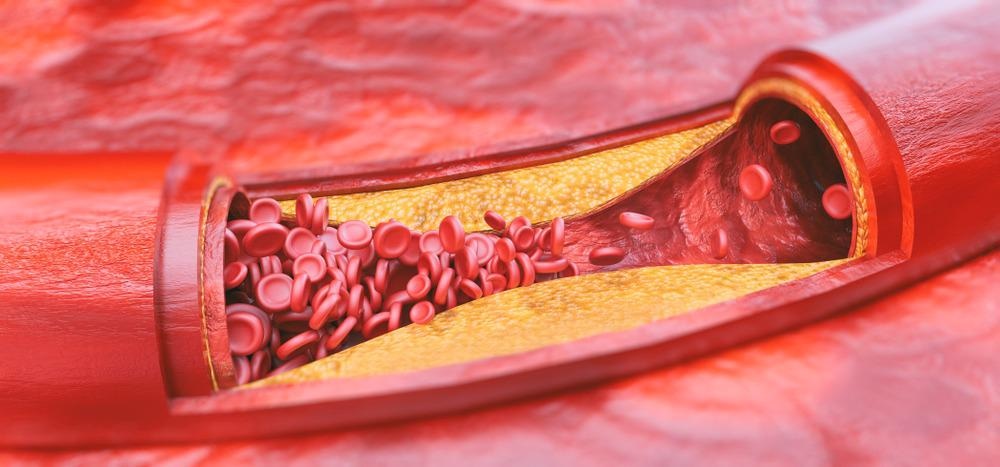A study published in the journal International Journal of Molecular Sciences proposes a plausible modification of the most crucial formulating variables for producing PGZ-packed PLGA nanoparticles using nanoprecipitation or single emulsification-solvent evaporation techniques.

Study: Pioglitazone-Loaded PLGA Nanoparticles: Towards the Most Reliable Synthesis Method. Image Credit: Crevis/Shutterstock.com
Using Pioglitazone to Control Progression of Atherosclerosis
Atherosclerosis is a severe disorder characterized by increasing infection and gradually calcifying ulcers in the artery wall's intima and interior components as a result of the development of plaques. Moreover, type-2 diabetes worsens atherosclerotic ulcers.
Although the link between antidiabetic medicines and the advancement of atherosclerosis remains unknown, Pioglitazone (PGZ), a commonly administered diabetes drug, has been shown to delay the growth of atherosclerosis.
PGZ is a tiny, somewhat hydrophobic molecule that is often utilized in treating or progressing the management of type-2 diabetes. Nevertheless, owing to its poor and pH-dependent solubility, short half-life in plasma because of fast hepatic metabolism, dose-based systemic adverse reactions, and nonspecific drug administration, PGZ's applicability is severely restricted.
To address this issue, appropriate nanocarriers, such as nanoparticles (NPs), may increase PGZ therapeutic effectiveness while reducing adverse effects.
Benefits of Nanoscale Drug Delivery Systems
Nanoparticles (NPs) are nanoscale systems in which either an artificial or biological polymer wall defines a cavity containing the active material (nanocapsules) or the active material is evenly scattered (nanospheres).
Generally, the nanoparticles-based drug carrier strategy is based on the ability to transport active materials primarily to the sick tissue and with greater intracellular absorption than free medicines. This results in not only a strong medicinal defense against systemic problems but also higher preservation of healthy cells.
Why PLGA-based Nanoparticles are the Way Forward?
Latest studies on nanoparticles predicated on poly(lactic-co-glycolic acid) (PLGA) as drug carriers are based on the field's growing knowledge of PLGA characteristics and chemical reconfiguration methods, which are used to optimize NP drug packing and releasing aspects.
The kinetics of polymer-based nanoparticles' breakdown are influenced by multiple variables, including polymer–water interactions, crystalline nature of the polymer, temperature, the existence of heteroatomic or hydrophilic groups, polymeric chain expansion and the employment of instigators in synthesizing, the concentration of polymer, pH, and salt levels.
PLGA is typically broken down by hydrolysis, which converts oligomers into bio-friendly monomers. PLGA is a material authorized by food and drug regulators and with its minimal toxicity, good cytocompatibility and biodegradability, and customizable structural characteristics, is especially suitable for drug administration.
The Two Synthesis Approaches
The optimal preparation strategies for enclosing hydrophobic pharmaceuticals were recommended to be single emulsification-solvent evaporation or nanoprecipitation. In the single emulsification-solvent evaporation method, the NPs are generated in two phases.
First, a polymeric solution is made in a water-insoluble organic solvent with high volatility. The colloid mixture of micelles is then created by introducing an emulsifying aqueous solution and forcefully combining the two phases with an ultrasonic mixer; the NP suspension is then produced by evaporating out the solvent.
The nanoprecipitation approach, in contrast, is centered around dumping a high volatility organic solvent miscible in water and containing the polymer into an aqueous phase. Slow stirring produces a colloidal NPs suspension. As a result, unlike the other method, the generated suspension may be stabilized by a moderate amphiphilic chemical such as PVA. This approach is often straightforward and quick, yielding particles with low polydispersity index (PDI) values.
Important Takeaways of the Study
The purpose of this study was to describe pioglitazone encasing utilizing PLGA NPs. After experimenting with two different approaches to nanomaterial production, the researchers determined that the nanoprecipitation technique produced superior outcomes with respect to size, PDI, encasing efficiency, drug loading, price, and processing time.
Only in the stability experiment did the NPs formed by single emulsion–solvent evaporation outperform those generated by nanoprecipitation, since those generated by nanoprecipitation tended to agglomerate throughout the freeze and thaw cycles.
This tendency is associated with a less negative zeta potential for NPs produced by the nanoprecipitation approach. Even after aggregation, their average diameter remained within the acceptable range.
There is no overall ideal synthesis process, but the architecture of the nanoparticles must be modified based on the chemical-physical properties of the encased medicine.
Looking Ahead
The robustness of the produced NPs acquired by nanoprecipitation may be increased down the line, for example, by adjusting the cryo-preservative solution or employing PEGylated PLGA in part to lower the agglomeration propensity without significantly affecting the NPs' properties.
Reference
Todaro, B., Moscardini, A., & Luin, S. (2022). Pioglitazone-Loaded PLGA Nanoparticles: Towards the Most Reliable Synthesis Method. International Journal of Molecular Sciences, 23(5). Available at: https://doi.org/10.3390/ijms23052522
Disclaimer: The views expressed here are those of the author expressed in their private capacity and do not necessarily represent the views of AZoM.com Limited T/A AZoNetwork the owner and operator of this website. This disclaimer forms part of the Terms and conditions of use of this website.